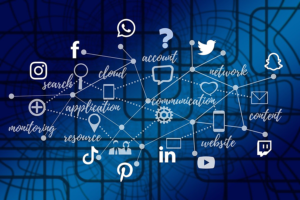#2 Implementing AI in Inner-City Communities: Detailed Insights and Strategies
Introduction: As we continue our exploration of the pros and cons of artificial intelligence (AI) in under-resourced communities, it’s essential to understand how to effectively integrate these technologies into programs, services, and solutions. By focusing on the unique needs and contexts of inner-city areas, we can ensure that AI initiatives are both impactful and inclusive.
Pros
 Improved access to education
Improved access to education
- Personalized Learning:
- Implementation: Schools and community centers can partner with EdTech companies to introduce AI-driven platforms like DreamBox or Khan Academy, which provide adaptive learning experiences. Training sessions for teachers and students on how to utilize these tools can ensure they are used effectively.
- Example: A local after-school program could integrate AI tutoring software that identifies specific learning gaps in subjects like math and reading, offering tailored exercises and real-time feedback.
- Tutoring and support:
- Implementation: Deploy AI chatbots on school websites and community learning portals that offer 24/7 homework help and resource recommendations. Collaborate with libraries to
 provide access to computers and Wi-Fi for students without internet access at home.
provide access to computers and Wi-Fi for students without internet access at home. - Example: An AI tutor like IBM’s Watson Tutor could be made available to students, providing instant help with difficult concepts, thus supplementing traditional classroom instruction.
- Implementation: Deploy AI chatbots on school websites and community learning portals that offer 24/7 homework help and resource recommendations. Collaborate with libraries to
- Personalized Learning:
- Enhanced Healthcare Services
- Telemedicine and Diagnostics:
- Implementation: Establish telehealth kiosks in community centers and churches equipped with AI diagnostic tools. Partner with healthcare providers to offer virtual consultations and remote monitoring of chronic conditions.
 Example: Use platforms like Ada Health or Babylon Health to enable residents to conduct preliminary health assessments and connect with doctors without the need for travel.
Example: Use platforms like Ada Health or Babylon Health to enable residents to conduct preliminary health assessments and connect with doctors without the need for travel.
- Predictive Analytics:
- Implementation: Collaborate with public health departments to use AI analytics platforms to monitor local health data, identify trends, and prepare for potential outbreaks. Ensure data privacy and community consent in all initiatives.
- Example: Implement predictive models that analyze data from local clinics to predict flu outbreaks, allowing for timely vaccination drives and public health campaigns.
- Telemedicine and Diagnostics:
- Economic Opportunities
- Job Training Programs:
- Implementation: Develop partnerships with tech companies to
 offer AI-powered job training programs focused on in-demand skills like coding, data analysis, and digital marketing. Provide scholarships or free access to ensure inclusivity.
offer AI-powered job training programs focused on in-demand skills like coding, data analysis, and digital marketing. Provide scholarships or free access to ensure inclusivity. - Example: Launch an initiative similar to Microsoft’s TechSpark program, offering free courses and certifications in AI and IT skills to help community members secure better-paying jobs.
- Implementation: Develop partnerships with tech companies to
- Small Business Support:
- Implementation: Create a digital hub for local entrepreneurs, integrating AI tools that offer market analysis, customer insights, and operational advice. Offer workshops on how to use these tools
 effectively.
effectively. - Example: Use AI platforms like Hootsuite for social media management and QuickBooks for financial planning to help small businesses streamline their operations and increase profitability.
- Implementation: Create a digital hub for local entrepreneurs, integrating AI tools that offer market analysis, customer insights, and operational advice. Offer workshops on how to use these tools
- Job Training Programs:
- Public Safety and Services
- Crime Prediction and Prevention:
- Implementation: Work with local law enforcement to implement AI systems that analyze crime data and predict hotspots. Focus on transparency and community engagement to address concerns about bias and privacy.
- Example: Utilize PredPol or ShotSpotter to identify areas at higher risk of crime and allocate resources for increased patrols and community outreach programs.
- Efficient Public Services:
- Implementation: Introduce AI-driven management systems for waste collection, public transportation, and utility maintenance. Engage with city officials to pilot these technologies in high-need areas.
- Example: Deploy AI-powered smart waste bins that signal when they need collection, reducing overflow and improving cleanliness in neighborhoods.
- Crime Prediction and Prevention:
 Access to Financial Services
Access to Financial Services
- Microfinance and Loans:
- Implementation: Partner with fintech startups to provide AI-driven microfinance solutions that assess creditworthiness using alternative data. Host financial literacy workshops to educate residents on these new services.
- Example: Collaborate with companies like Kiva to offer microloans based on AI assessments, helping local entrepreneurs start or expand their businesses.
- Financial Planning:
- Implementation: Offer community-based financial planning services using AI tools that provide personalized budgeting advice. Ensure these tools are accessible via mobile devices.
- Example: Introduce an app like Mint or Cleo that helps residents track expenses, save money, and plan for financial goals with AI-driven insights.
- Microfinance and Loans:
Cons
 Job Displacement
Job Displacement
- Automation of jobs:
- Mitigation: Establish retraining programs focused on transitioning displaced workers into roles that require human skills, such as caregiving, creative industries, or AI management. Advocate for policies that support job transition initiatives.
- Example: Set up a community tech center offering retraining programs in collaboration with local colleges and tech companies.
- Automation of jobs:
- Digital Divide
- Access to Technology:
- Mitigation: Ensure equitable access to technology by providing affordable internet services and distributing refurbished computers or tablets to low-income families. Partner with tech companies for equipment donations.
- Example: Implement a program like the FCC’s Lifeline, which offers discounted internet services to qualifying families.
- Technical Literacy:
- Mitigation: Launch community-driven tech literacy programs that teach essential digital skills. Offer multilingual support and materials to cater to diverse populations.
- Example: Organize regular workshops at local libraries where volunteers teach residents how to use various AI tools and applications.
- Access to Technology:
 Bias and discrimination
Bias and discrimination
- Algorithmic Bias:
- Mitigation: Advocate for transparency in AI development and encourage the use of diverse data sets to train AI models. Establish community review boards to oversee AI implementations in public services.
- Example: Collaborate with research institutions to study the impact of AI on minority communities and develop guidelines to prevent bias.
- Surveillance and Privacy:
- Mitigation: Develop clear policies and guidelines to protect resident privacy and ensure AI systems are used ethically. Promote community involvement in decision-making processes.
- Example: Hold public forums to discuss the implementation of surveillance technologies and address privacy concerns.
- Algorithmic Bias:
 Economic Inequality
Economic Inequality
- Exacerbating Inequality:
- Mitigation: Focus on inclusive AI projects that prioritize benefits for under-resourced communities. Secure funding specifically aimed at bridging the gap between affluent and low-income areas.
- Example: Create grant programs that fund AI initiatives in inner-city schools and healthcare centers.
 Cost of Implementation:
Cost of Implementation:
- Mitigation: Seek public-private partnerships to share the costs of implementing AI solutions. Apply for government grants and philanthropic support to fund these initiatives.
- Example: Partner with foundations and tech giants to launch pilot projects that demonstrate the value of AI in under-resourced communities, encouraging further investment.
- Exacerbating Inequality:
- Ethical and social implications
 Loss of Human Touch:
Loss of Human Touch:
- Mitigation: Ensure AI complements rather than replaces human services by integrating AI tools that enhance the efficiency and reach of human efforts without eliminating personal interactions.
- Example: Use AI to handle administrative tasks in healthcare, freeing up professionals to spend more time with patients.
- Community Displacement:
- Mitigation: Design AI-driven urban projects with input from local residents to ensure they meet community needs and prevent gentrification. Implement policies that protect affordable housing.
- Example: Establish a community advisory board that oversees urban development projects and ensures they benefit current residents.
 Conclusion:
Conclusion:
Integrating AI into inner-city communities requires careful planning, inclusive practices, and a commitment to addressing potential downsides. By focusing on equitable access, community engagement, and proactive mitigation of risks, AI can become a powerful tool for improving the lives of residents in under-resourced areas.
Stay tuned for the next installment in our series, where we will delve into case studies of successful AI implementations in inner-city communities and explore best practices for replicating these successes.
By expanding on each point and providing specific examples and actionable steps, this installment aims to offer a more detailed and practical guide for integrating AI into inner-city programs, services, and solutions.

asdasdasdasd